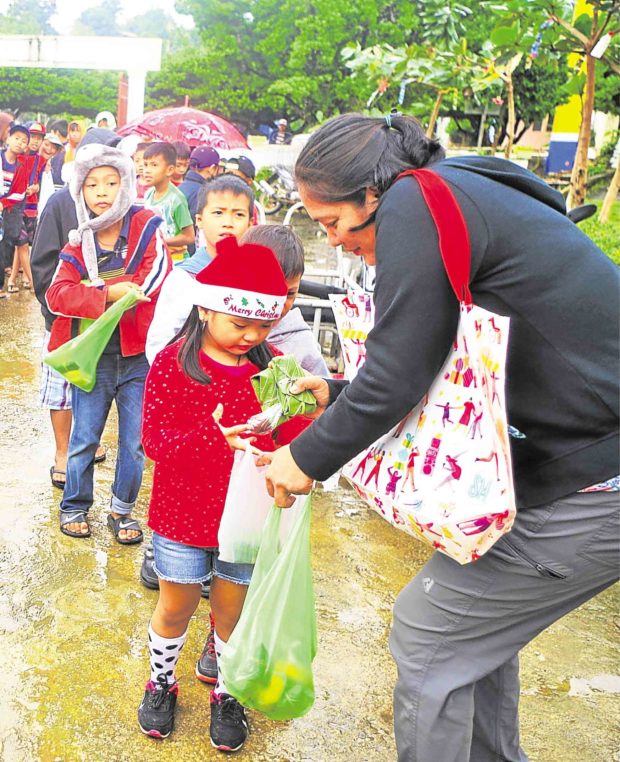In this Batanes town, ‘winter’ marked with gift-giving

Children are gifted with native delicacies in Itbayat town in Batanes province. —NATHAN ALCANTARA
ITBAYAT, Batanes — This northernmost island town has a season it calls “winter” because of the constant drizzle and the chilly whistle of the northeast wind that occurs in December until late February or the first half of March.
The highest daily rainfall recorded here this month was 36 millimeters on Dec. 7, the strongest gust of wind at 20 meters per second on Dec. 16 and the coldest temperature of 15.4 degrees Celsius on Dec. 18 at 2 a.m., according to the Itbayat weather forecasting station.
But “winter” does not discourage residents from waking up early to join the morning Mass nor bar children from enjoying the exchange of gifts, as well as the Itbayat practice called “50 wraps.”
In a public gift-giving assembly, parents are tasked to bring “50 wraps” of fried flour ball munchkins, doughnuts, or bite-size pancakes (called “frito” or “sputnik” because of the shape) or “maruya” (mashed bananas added to the dough).
“50 wraps” can also mean sweet potato fritters called “diko” or “suman” (rice cakes), all of which are wrapped in leaves of breadfruit (locally called “abaya”).
Article continues after this advertisementSome prefer to make “patupat,” or rice cakes wrapped in pyramid-shaped coconut leaves and dipped in molasses or syrup, while other parents share small slices of cake wrapped in abaya.
Article continues after this advertisementThese are collected and placed in a woven basket and children have the “lucky pick” of five or more pieces when they fall in line or when the parents themselves distribute these. Some of the wrapped goods find their way to visitors and guests so that everyone goes home with gifts.
There is no record of how this practice started but it appears to be similar to the Jewish tradition of sharing fried goods such as doughnuts and potato fritters during the eight-day Feast of Dedication or Hanukkah.
Caroling in Itbayat is called “minharana” or “miharana,” and children and teenagers only visit houses on Christmas Eve and the night of Dec. 25, and again on New Year’s Eve and the night of Jan. 1.
The “Sagrada Familia” is marked by a Mass in all Catholic churches but Itbayat celebrates it with a community activity.
“Sagrada Familia” commemorates the biblical flight of the Holy Family to Egypt to escape the marauding soldiers of King Herod.
Introduced here by former parish priest, Domingo Deniz, who served Itbayat for nearly half a century, the Itbayat version of “Sagrada Familia” concludes with a “vunung” (feast), where men butcher a cow and a pig past midnight so the community’s women can start cooking at dawn.
The animals, rice, vegetables, condiments and other ingredients are all donations from the village, store owners and other civic-minded community members.
In the morning, children perform at a program held in front of the Catholic Church grounds. At noon, everyone partakes of lunch, composed of yellow rice called “valenciana,” white rice and an assortment of viands wrapped in abaya.